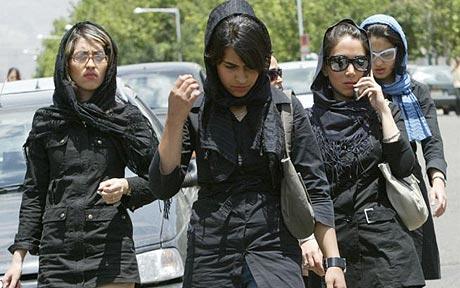
Young Iranians must adopt complicated and creative behavior to navigate around restrictions on their private lives, says journalist Kamin Mohammadi, writer, journalist and broadcaster specializing in Iran.
Iran, in her long history, has been no stranger to repression and dictatorship, mostly from invaders. Iranians quickly developed the habit of thriving when times are tough, of somehow finding a way around the obstacles.
“We are long used to not being direct, to never approaching things straight. We have learnt to shimmy our ways around obstacles, and to approach fulfilling the simplest desires of life with creativity and imagination,” Kamin Mohammadi says.
Nowhere is this creativity and imagination more obvious that in the relations governing men and women.
“Before I returned to Iran after nearly 20 years away, a very well-informed and well-travelled friend said to me: <<But they don’t drink or have sex before marriage in Iran>>.
“When I arrived in Iran, and especially after I had travelled back there often enough to be absorbed into the fabric of Iranian life like a local, I realised that statement could not be further from the truth.
“Everywhere I went I was offered <<a real drink>> by Iranians who had become specialist home brewers, so good at turning hops into beer or grapes into wine in their basements that some still carry on these home-brewing concerns now that branded alcohol is easily available on the black market,” Kamin Mohammadi says.

As for dating and sex – well, what would you expect of a population that is overwhelmingly young? Some 70% of Iranians are under the age of 35 and this army of young people has grown up under the restrictions – and its curious contradictions – and they are used to bending the rules. The state runs to keep up.
“When I first visited Iran in 1996, and I wanted to walk down the street with a male family friend my mother considered it judicious to come with us, in case we were stopped and asked to prove our relationship to each other. But as the years passed, my expeditions with this male family friend became a telling marker of how the regime was changing.
“Just a couple of years after that first trip, my friend and I would walk around Tehran together and soon we were roaming the streets endlessly – in order to have some privacy.
“Our first visits were to newly-opened internet cafes – where I saw booths crammed with youngsters poring over the screen together. Most popular were – and remain – chat rooms where people can meet and chat – and even set up secret dates,” the journalist says.
For the first time in Iranian history, the people have a private space – a room of their own albeit in cyberspace – in which they can interact with others, usually of the opposite sex, without being watched, restricted or punished.
“When my friend and I were able to stray further from home, we had to take taxis home. In Iran, as well as private taxis, there are shared taxis called savaris which you can share with as many other people as are going your way. The driver squeezes in as many people as he can and here the normal rules of the Islamic Republic – so keen on gender segregation – seem to go out of the window.
“Although people try to arrange themselves so that strange men and women are not sitting on top of each other, my friend and I found ourselves sitting so close that I could feel his heart beating, the closest we had ever come physically.
“One friend, Iranian-born and brought up in the West like myself, told me of a romance she had had with a young man from Tehran which consisted purely of them riding around in savaris. They would ride from one end of town to another, asking the driver to take no other fares when they wanted to talk, and asking him to take other fares when they wanted an excuse to get physically close to each other,” she says.
The creative possibilities of the car have probably not been thus explored since America invented The Teenager in the 1950s. In Iran now, the car has become a neutral space, a place that the people – not just the young – can escape from the ever-present eyes of the family, society and the regime.
The mobile phone is another space in which young Iranians have found their creativity. During evening strolls with my friend, his phone would start to ping insistently. He explained to me they were Bluetooth requests to link phones with his. Those within Bluetooth reach would try to connect, to exchange numbers. This marks definitively the first time that Iranians – indeed many in the Middle East – have been able to go outside the control of the family to choose their own romantic interest.
“Another friend, a veteran of Silicon Valley who runs an internet company in Iran, once told me that we have the most creative computer minds because, from a young age, they start to crack the censorship codes that ban certain websites.
“I am no prophet, but I would guess that where a sexual revolution takes place, a social revolution can follow. The people of Iran, their creativity honed from thousands of years of repression, are adept at doing what they want while appearing to follow the rules.
“Their inventiveness and creative solutions to restrictive life have sharpened and honed their brains, and, I believe, will eventually also chip away at the restrictions of the regime until they become meaningless.
“When the day comes that Iran enjoys its own brand of democracy, the extra dimensions this constant weaving around the rules has given the Iranian character will help it to achieve truly great things in the world,” said Kamin Mohammadi.